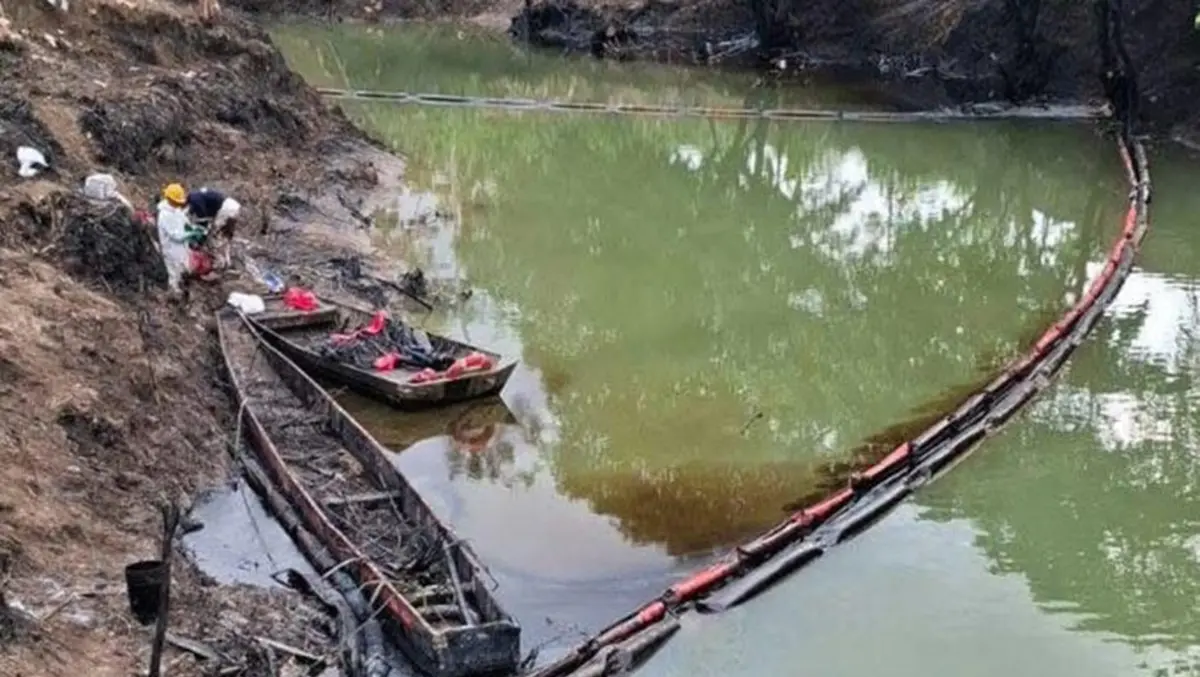U.S. Approves Lithium Mining Despite Opposition From Indigenous Peoples

The Rhyolite Ridge mine in Esmeralda County, Nevada, U.S. X/ @bentleyballan
October 25, 2024 Hour: 10:15 am
They warned of the potentially devastating impact on Silver Peak Range’s fragile ecosystems and sacred sites.
On Thursday, the U.S. government has approved a lithium mine project in Nevada aimed at increasing the domestic supply of the essential mineral needed for the country’s energy transition, despite years of fierce opposition from environmental groups, Native American tribes, and local communities.
RELATED:
U. S. Plan to To Seize Lithium in Bolivia Revealed
The U.S. Bureau of Land Management granted final approval to Ioneer Ltd’s Rhyolite Ridge lithium-boron project, located about 355 km southeast of Reno city. The project’s lithium deposit is projected to be sufficient to power approximately 370,000 electric vehicles annually for over two decades. Construction is set to begin in 2025, with production expected to start in 2028.
The approval concluded a six-year review process during which opponents warned of the potentially devastating impact on the region’s fragile ecosystem and sacred sites in the Silver Peak Range, which are integral to the cultural heritage of the Western Shoshone people.
Environmental groups also highlighted the project’s existential threat to Tiehm’s buckwheat, a rare wildflower found nowhere else on Earth. In June, over 100 scientists submitted a letter to the Bureau of Land Management, expressing concern that the mine would put Tiehm’s buckwheat “on a path to extinction.”
“By greenlighting this mine the Bureau of Land Management is abandoning its duty to protect endangered species like Tiehm’s buckwheat, and it’s making a mockery of the Endangered Species Act. We need lithium for the energy transition, but it can’t come with a price tag of extinction,” said Patrick Donnelly, Great Basin director at the charitable organization Center for Biological Diversity.
Water consumption emerged as another significant environmental concern. According to the online news website Nevada Current, traditional lithium mining operations can consume up to 2 million liters of water per metric ton of lithium produced, jeopardizing already strained desert aquifers.
Indigenous peoples, including the Fort McDermitt Paiute and Shoshone Tribe, have expressed serious worries about the project’s impact on their water supplies and sacred cultural sites.
Beyond water usage, the Institute for Energy Research noted that lithium mining operations can lead to significant soil and water contamination, air pollution from dust, and potential groundwater contamination from extraction chemicals. Mining also generates extensive waste tailings containing toxic substances and heavy metals.
Lithium, a key component of lithium-ion batteries, is considered essential for electric vehicles and renewable energy storage systems, both crucial for transitioning to a clean energy economy.
The Rhyolite Ridge lithium project marks the first domestic source of lithium permitted by President Joe Biden’s administration, which has implemented measures to support domestic critical minerals’ production, including a US$700 million loan from the Department of Energy to Ioneer Rhyolite Ridge LLC.
The Silver Peak lithium mine in Clayton Valley, Nevada, is the only producing lithium mine in the United States, although over 100 other sites are under exploration. The brine evaporation mine has faced scrutiny for depleting groundwater aquifers in an increasingly arid region.
A map from the Center for Biological Diversity identifies more than 125 lithium extraction projects in the western United States, seven of which are inactive and the majority at various stages from exploration to development. Most proposed mines are in Nevada, which is considered a future “Silicon Valley of lithium.”
“Concerned about the risks, local residents and environmentalists have resisted new mines with tactics from protests to litigation, but a government-supported lithium boom appears to be underway regardless,” reported Energy News Network in July.
Historically, the high costs of environmental compliance and labor in the United States have limited domestic lithium production, with companies often finding it cheaper to import from other countries.
A recent report by Solar Reviews indicated that production costs in the United States can range from US$4,000 to US$12,000 per metric ton of lithium carbonate, significantly higher than in major exporting countries like Chile and Argentina.
“U.S. environmental regulations make it much more expensive to extract lithium here. This is why companies have traditionally chosen to mine lithium in countries with fewer environmental protections, effectively exporting our environmental impact overseas,” according to the Institute for Energy Research.
“Because lithium deposits come embedded in other metals and minerals, extracting lithium can be incredibly difficult. More refineries-the plants where raw lithium is processed into a concentrated form of the metal that goes into batteries need to be built in North America. Lithium processing also requires expertise that is in short supply in the United States and among our allies,” it added, noting that “environmentalist opponents have driven mines from our shores.”
teleSUR/ JF Source: Xinhua






